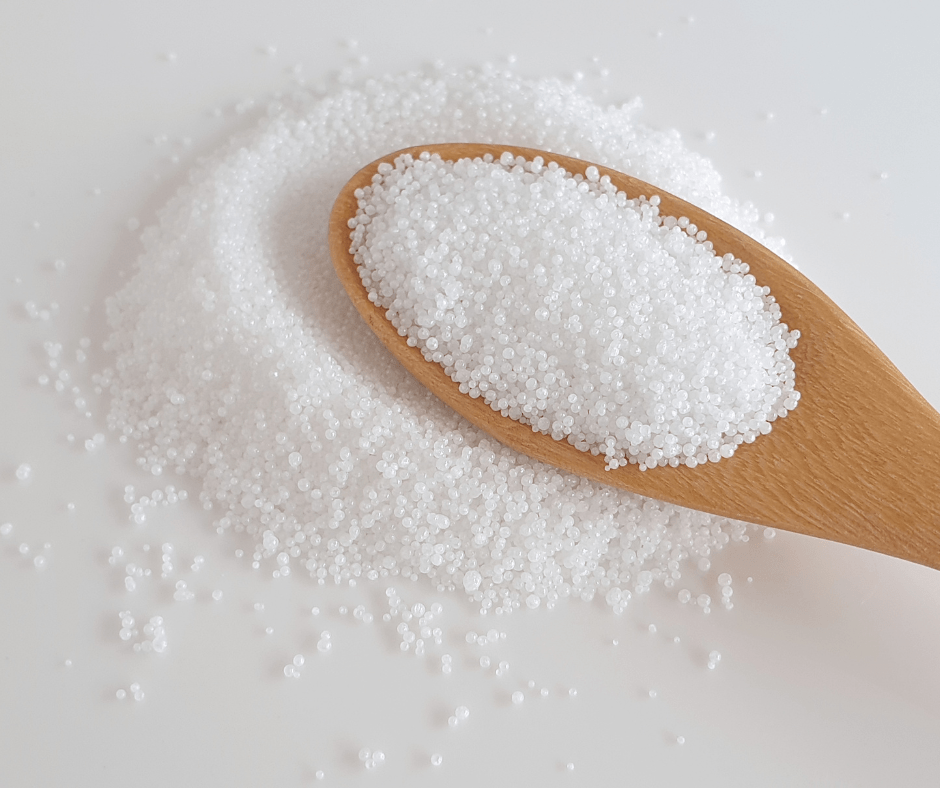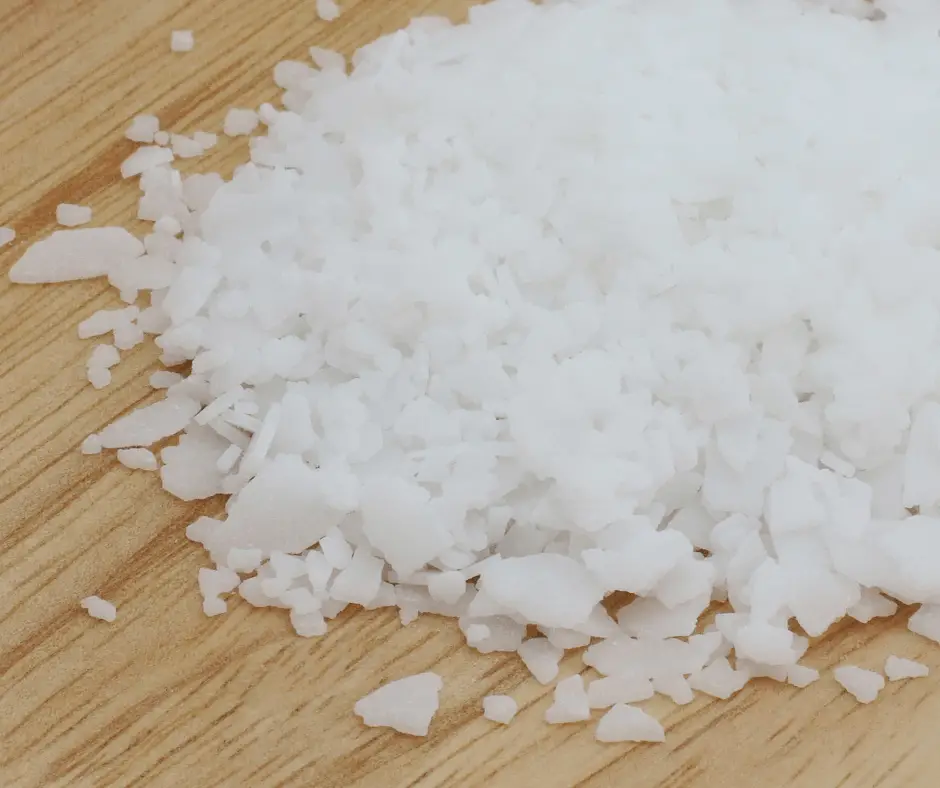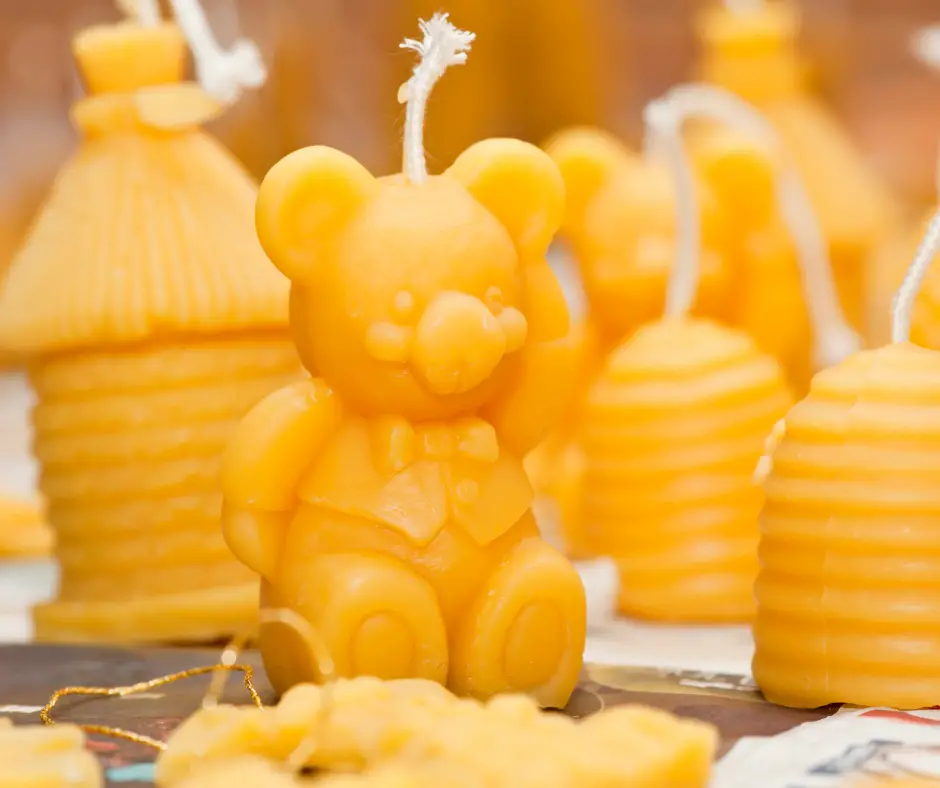If you’re looking to create the perfect candle, you need to know about stearic acid.
Stearic Acid is a fatty acid frequently used in candle making because it increases the hardness of the candle wax. This wax additive can be found in many off-the-shelf products and store-bought candles to improve burn quality.
This guide will teach you about the different types of stearic acid, how to use it in your candles, and some safety tips to keep in mind.

What is stearic acid, and what does it do in candles?
Stearic acid is a type of saturated fatty acid that is solid at room temperature. It is also used in cosmetic and personal care products, as well as in food production. When it comes to candle making, stearic acid provides the following benefits:
Boosts Wax Hardness – Stearic acid will increase the hardness of different wax types. This is especially important in creating free-standing candles, such as pillars, to ensure they hold their shape when exposed to high ambient temperature. Increasing wax hardness also increases the burn time of your candle by reducing the amount of wax drawn into the wick.

Increases Opacity – Stearic acid helps to produce a whiter and brighter candle as it increases the opacity of the wax. This is especially useful when using transparent waxes, as the addition of stearic acid prevents the candle from “sweating” and becoming translucent.
Improves Flame Quality – Stearic acid helps to provide a more consistent and stronger flame. This prevents the wick from consuming too much wax, which can lead to an uneven burn or even a wick drowning.
Easier Mould Release – Adding stearic acid to your wax makes it easier for the candle to release from the mould. This is especially useful if you are working with intricate moulds or intricate designs.

Longer Scent – By adding Stearic Acid to your candle wax your candles will produce scent for longer with the increase in burn time. Also you are able to increase the waxes natural fragrance load with Stearic Acid providing hardening properties to your final product.
Types of Stearic Acid for Candle Making
There are two main types of stearic acid available for candle making: vegetable-based and animal-based. Vegetable-based stearic acid is derived from plant sources like palm oil, while animal-based stearic acid comes from animal sources like beef tallow. Both types of stearic acid work equally well for candle making, but vegetable-based is often preferred for ethical and environmental reasons.
Using Stearic Acid In Candles
You must first melt the wax to use stearic acid in your candle. Once it is melted, you can add the stearic acid in small amounts and stir until it is thoroughly combined. The amount of stearic acid you use will depend on the type of wax and desired results. Generally, 1 part stearic acid to 20 parts wax is recommended as a starting point. This works out to 3 – 5% of your candle mixture. We have included a table below that includes the measurements of stearic acid in different candle wax types.
| Wax Type | Stearic Acid (%) |
| Beeswax | 3 – 5 (too much can cause cracking) |
| Soy | 5 – 10 |
| Paraffin | 5 – 10 |
| Rapeseed | 5 – 10 |
| Coconut wax | 7 – 10 |
Melting Point of Stearic Acid
The melting point of stearic acid is 69.3°C / 156.7°F, which is a higher melting point than most paraffin, bees, rapeseed, and coconut waxes. As palm wax has one of the highest melting points at 180°F, you would only add stearic acid for its other benefits.
For your information, we have listed the melting points of these wax types below.
| Type of Wax (Pure) | Melting Point in Fahrenheit (°F) | Melting Point in Celsius (°C) |
| Paraffin Wax | 115 to 154 | 46 to 68 |
| Beeswax | 144 to 149 | 62 to 65 |
| Soy Wax | 120 to 180 | 49 to 82 |
| Rapeseed Wax | 126 to 130 | 52 to 54 |
| Coconut Wax | 100 to 107 | 38 to 42 |
| Palm Wax | 180 | 80 |
What Waxes Contain Stearic Acid?
Stearic Acid naturally occurs in some waxes, such as stearin (or Bayberry) and beeswax. If you are using a wax that does not contain stearic acid naturally, you can add stearic acid as a wax additive.
Two of the main waxes that have high level of Stearic Acid are beeswax and soy wax. Soy waxes chemical makeup consists of over 80% Stearic Acid. On the other hand, the majority of free-fatty acids in beeswax (12%) are made up of Stearic Acid.
Different Wax Types – Substitute for Stearic Acid
Although mixing different wax types can provide many benefits, stearic acid is still the preferred choice for wax hardening. This is because you gain the properties listed above without the possible negatives that come from mixing different wax types. That said, there are alternative wax additives that you can use as a substitute. Palm waxes contain a high amount of palmitic acid, which is also used to increase wax hardness. In some recipes, microcrystalline and carnauba waxes are often used as a replacement for stearic acid.

If you are interested in alternatives, we suggest that you read our guide to candle wax blending and how you can make the most of wax combinations to enhance your candles.
Safety Tips for Using Stearic Acid
When using stearic acid for candle making, safety should always be your top priority. Ensure you use the right tools and protective gear, such as heat-resistant gloves and goggles. Be sure to work in a well-ventilated area and never leave your melted wax unattended. Finally, keep all containers of stearic acid adequately sealed and stored away from heat sources.
These safety precautions are important as they mitigate the following risks when using stearic acid:
- The chemical is flammable.
- The acid can cause respiratory and skin irritation.
- When both stearic acid and magnesium are mixed, this produces magnesium stearate, which is toxic.
Is Stearic Acid Good for Candle-Making?
Stearic acid is a great additive to use when making candles, as it helps improve the wax’s hardness and increase its opacity. It also improves the flame quality and makes it easier to release the candle from the mould. However, be sure to follow proper safety precautions when using stearic acid and always use the right amount for the best results.
Final thoughts on using this fatty acid in your candles
Stearic acid is an excellent choice for candle makers looking to create a quality product. This fatty acid helps make the wax harder and more stable when melted, resulting in a slower-burning candle that can hold more scent and last longer. Follow the safety tips when using stearic acid for your candle-making projects.



